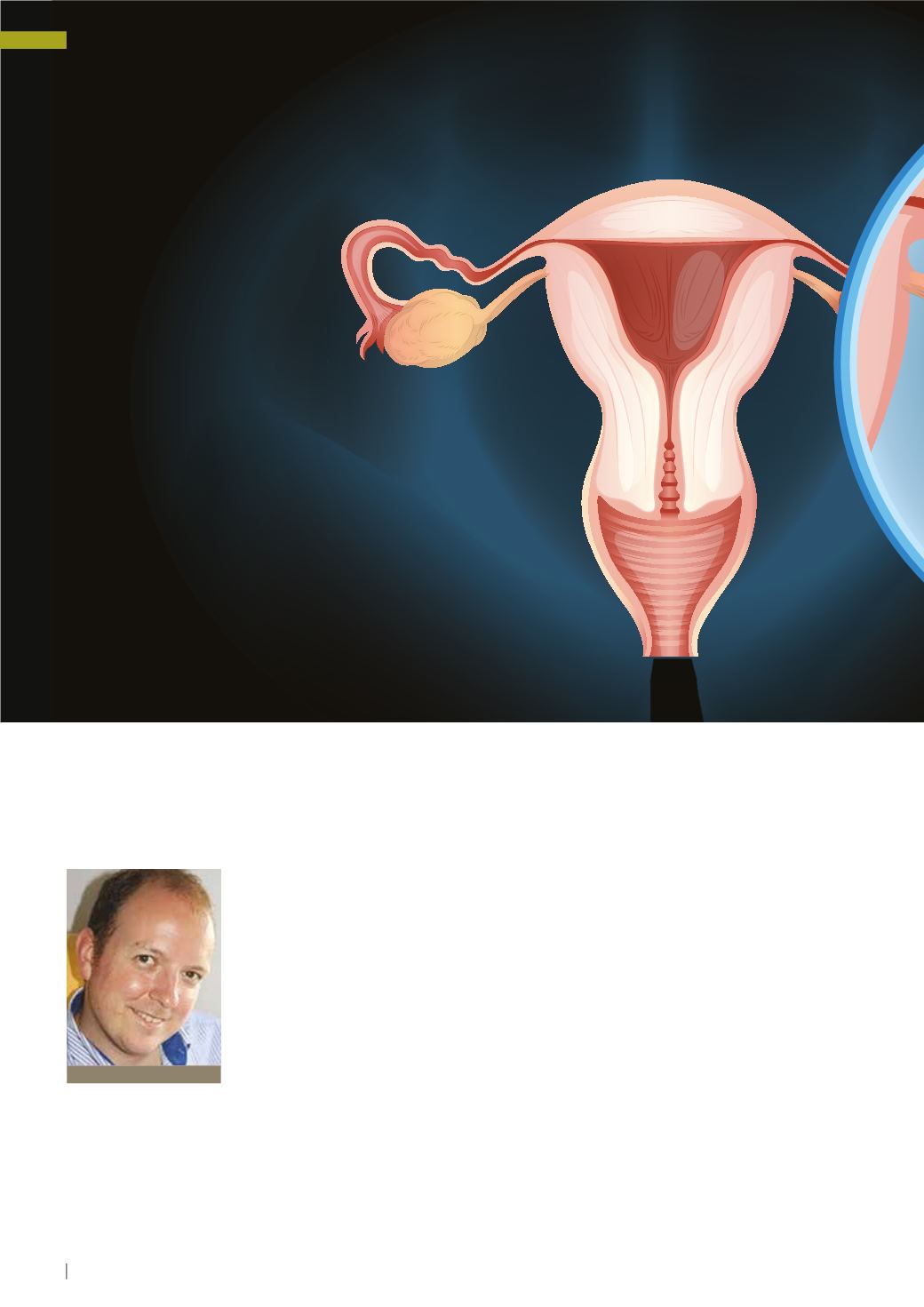

V
incent Dochez, MD, of theUniversity
Hospital of Nantes, France, said,
“Ovarian cancer is the fifth leading
cause of death for women with cancer
worldwide. Inmore than 70%of cases, it is
diagnosed at an advanced phase. Mean
survival duration is only 5 years, (30%).
More than 90% of ovarian lesions are
detected before menopause, and over
60% of those detected after menopause
are found to be benign.”
He continued, “It seems essential to
identify early malignant ovarian tumours
from benign ovarian tumours. New
clinical practice recommendations were
published recently in France. The term
presumed benign ovarian tumours has
been introduced in relation to the more
HE4 + CA125
screening helps
detect ovarian cancer
in presumed benign
ovarian tumours
The combination of human epididymis protein 4 (HE4) and carbohydrate antigen 125
(CA125) has been found to perform better than Risk of Malignancy Index and Risk of Ovarian
Malignancy Index scores to predict ovarian cancer risk in patients with a presumed benign
ovarian tumour, an open prospective, multicentre research study of biomarkers show.
usual term of ovarian lesion or ovarian
cyst.”
Dr Dochez’s objective was to evaluate
the diagnostic performance of HE4,
carbohydrate antigen 125 (CA125), the
Risk of Malignancy Index and the Risk
of Ovarian Malignancy Index in dis-
criminating ovarian cancer from benign
ovarian diseases.
The investigators evaluated several
tumour markers. Dr Dochez explained,
“CA125 was first described in the
early 1980s. In ovarian cancer, serum
CA125 levels may be elevated, but
CA125 sensitivity is low in the early
phases. Increased CA125 levels are
also reported in other physiological or
Dr Vincent Dochez
GYNAECOLOGIC ONCOLOGY
PRACTICEUPDATE CONFERENCE SERIES •
RCOG World Congress 2017
12









